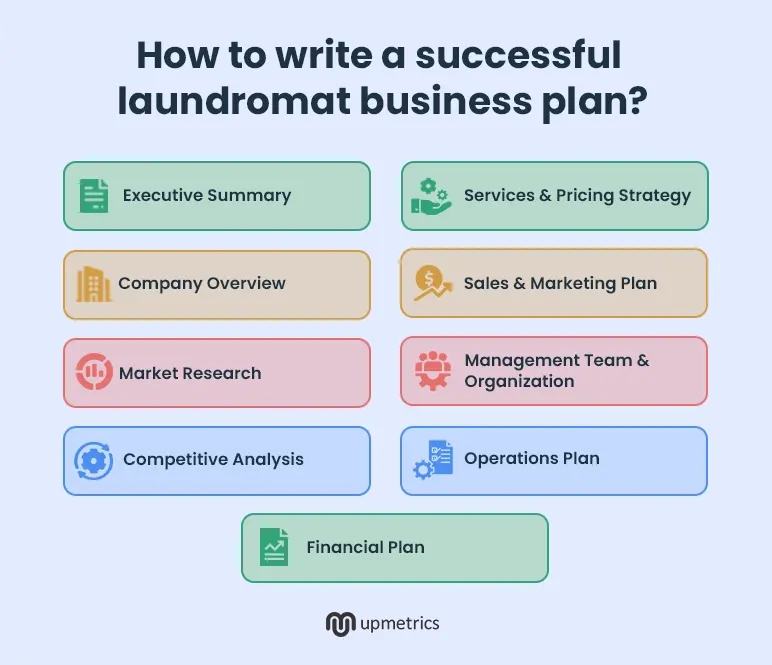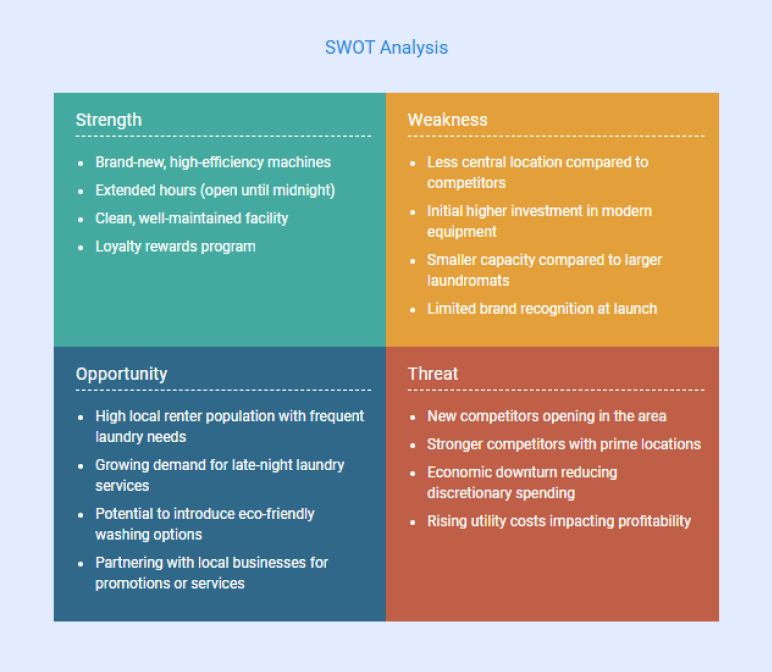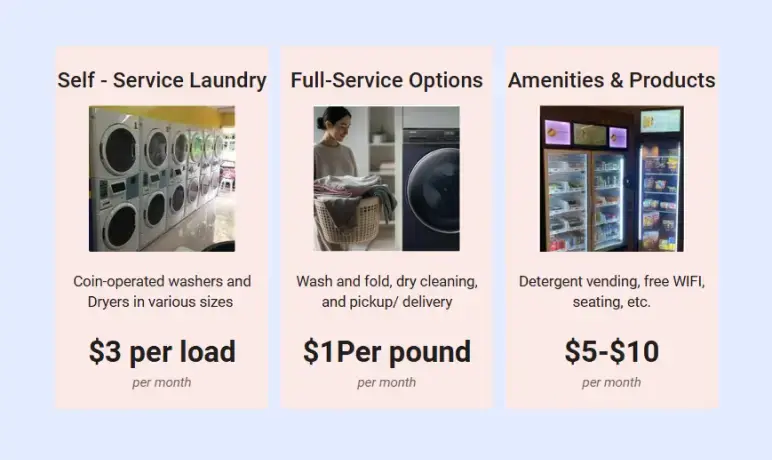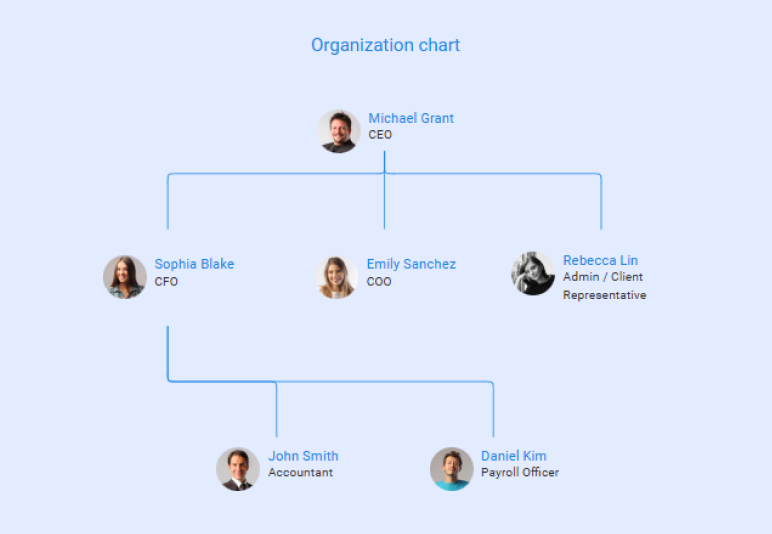Starting a laundromat sounds pretty straightforward. You’ve got machines, open the doors, and let people do their laundry.
But if you’ve done even a little digging, you’ve probably realized there’s a lot more to it. It’s not just about machines—it’s about money, setup, location, and getting the details right from day one.
That’s why having a clear plan matters. It helps you see what this business will actually take—and whether it’s worth your time, energy, and investment.
Not sure how to start?
Use this laundromat business plan template to break it all down and make the process less overwhelming.
What is a laundromat business plan?
A laundromat business plan explains what your business does, who it serves, and how it’ll grow. It covers your services, target customers, competition, operations, pricing, equipment, marketing, and finances.
A strong plan keeps you focused, shows where you’re headed, and helps you make smart choices as you build your laundromat from the ground up.
Why do you need a business plan for a laundromat?
Drafting a laundromat business plan might seem like a tough task on your to-do list. But writing a comprehensive plan offers clarity, sets you up for success, and assists with financial planning, fundraising, and really understanding the market.
Whether you’re raising money or planning for expansion, a business plan will help you make sure you stay on course.
Now, let’s discuss why it’s worth investing your time and energy into a laundromat business plan.
Defines your business model
The process requires you to look at the services you offer and operations, as well as draw up your unique selling points, such as 24-hour access or premium equipment.
Estimates costs and financing
Opening a laundromat can be an expensive venture, with startup costs frequently ranging from $200,000 to $500,000. A business plan helps outline costs and funding needs.
Attracts investors or loans
Whether it’s an investor or lender, they’ll want to see the financial projections and market research behind your plan. A solid plan shows you’re well-prepared.
Helps you better know the market
Research helps you assess local demand in your area, see who else is providing the same products or services you offer, and find the right location and pricing.
In short, a laundromat business plan isn’t just for investors; it’s a blueprint for how you’re going to grow your laundromat business.
How to write a successful laundromat business plan?
Writing a business plan becomes much easier when you break it into key sections. Below, we’ll go through each component of a laundromat business plan and explain what to include.
By following this step-by-step approach, you’ll cover all your details and end up with a comprehensive plan.

1. Executive Summary
The executive summary is a one-page snapshot of your laundromat business plan. It’s often written last but placed first to capture attention quickly.
Briefly introduce your laundromat concept and location, such as a 24/7 self-service facility in Downtown XYZ serving apartment renters and college students.
Next, highlight what makes it stand out, like energy-efficient machines, free Wi-Fi, or a comfortable seating area.
Don’t forget to mention key financials, including how much funding you’re seeking (if any) and basic projections.
If you want to secure funding, discuss how much funding you need and how you’ll use it.
Remember, your plan summary summarizes your entire plan and gives readers a clear understanding of your landromat. Hence, keep the tone confident and focused—details come later in the full plan.
Say goodbye to boring templates
Build your business plan faster and easier with AI
Plans starting from $14/month

2. Company Overview
The company overview section provides essential information about your laundromat, including who you are, what you do, and your goals. Keep this section clear, concise, and impactful.
Here’s what you need to include in this section:
- Business name & location: State your laundromat’s name and address. Mention why the location works well, such as being near apartments, student housing, or high foot traffic.
- Business description: Describe the type of laundromat (self-service, full-service, or both), the size of your space, the number of machines, and the kind of customer experience you aim to provide.
- Legal structure & ownership: Specify your business structure (e.g., sole proprietorship, LLC) and list the owner(s).
- Background history: Briefly explain when and why you started the business, or why you took it over—mention any experience or research that supports it.
- Future goals: Outline where you want the business to go, like adding services, opening new locations, or increasing profits.
Overall, this section provides an in-depth understanding of your laundromat business and sets a solid foundation for your entire business plan.
3. Market Research
No business operates in a vacuum, especially a laundromat serving a local community. The market research section shows you understand your customers, the local area, and the broader industry.
Start by describing your target market. Common targets include apartment renters without in-unit laundry, college students, young professionals, and local businesses.
Next, demonstrate industry knowledge. Laundry demand is steady, but trends like cashless payments and high-efficiency machines may impact your business.
If laundry pickup and delivery services are popular in nearby cities and you plan to offer them, mention this.
Finally, identify any market gaps. Maybe there’s no 24-hour laundromat, or existing ones are overcrowded or unclean. Show how your research supports the opportunity for your business.
4. Competitive Analysis
There is competition for every laundromat, so your business plan should address it clearly. This competitor analysis shows you understand who you’re up against and how your business will stand out.
Here’s how to approach this section:
- Identify other laundromats or laundry services in the area, especially those within a few miles.
- List their offerings, strengths, and weaknesses. For example, “One has old machines and closes early, while the other offers drop-off services but charges a premium price.”
- Explain how your competitive advantages will allow you to compete, such as new machines, hours in excess of those of the competitor, and a loyalty program not offered by other laundromats.
- Acknowledge challenges, like a competitor in a better location, and explain how you’ll compete through service, pricing, or marketing.
If applicable, conducting a SWOT analysis will prove useful here since it concisely lists your Strengths, Weaknesses, Opportunities, and Threats in comparison to competitors.

5. Services and Pricing Strategy
In this section, detail what services your laundromat will offer and how you’ll meet customer needs.
While self-service laundry is the core, think about all the extras that can set your business apart. Also, outline your pricing strategy for these services.
Start by breaking down each offering, beginning with your self-service facilities.
Self-Service Laundry
Describe your self-serve facilities. How many washers and dryers will you have, and of what capacity? Will they be coin-operated, or will you use a card or mobile payment system?
Mention any perks like different machine sizes (for small vs. oversized loads) or faster machines that reduce wash/dry time.
Full-Service Options
Explain any additional services, such as wash-and-fold, dry cleaning drop-off/pickup, or pickup and delivery laundry services.
Describe the range of services your laundromat will offer, such as self-service machines, full-service wash-and-fold, and additional features designed to improve the customer experience.

Amenities & Products
Include any other amenities such as snack and detergent vending machines, a change machine or ATM, complimentary Wi-Fi, waiting areas, television sets, a play area for children, or air conditioning. They make the customers happy.
Pricing Strategy
Describe your pricing plan for washers, dryers, and full service. Set your rates against other laundromat rates and highlight any discounts such as welcome discounts, standard promotions, loyalty programs, student discounts, or off-hour specials.
Also, establish whether your company will be an affordable option or a luxury service that emphasizes superior quality. This will indicate how your laundromat can attract customers and make money with specified services, amenities, and rates.
Here, you’ll need to respond to the question: “What will your laundromat do, and how will it make money?”
6. Sales and Marketing Plan
A strong marketing approach plays a key role in attracting customers and building trust.
In this section, you should detail your strategy to promote your laundromat and build a robust customer base. This involves local outreach, creating an online presence, offering promotions, setting up loyalty programs, and measuring your marketing efforts.
The following are the key marketing tactics and promotional methods:
- Local outreach & advertising
Think about local ads, handing out flyers or coupons, and organizing events. Team up with businesses nearby for mutual promotion and back local events to boost your profile.
- Online Presence
Build a Google Business Profile, design a website, and run social media accounts. Ask for reviews on sites like Google or Yelp and keep customers in the loop with updates and deals to boost trust and online visibility.
- Promotions & loyalty programs
Start loyalty cards, referral schemes, and special offers to get customers coming back. Give discounts or perks during quiet times to draw more people when it’s slow.
- Monitoring & budgeting
Set a clear marketing budget (for example, $3,000 for signs, flyers, and ads). Keep an eye on success by counting customers watching revenue changes, and seeing how well promotions work.
By combining these strategies, you can ensure a steady flow of customers while also building long-term loyalty. Monitoring and adjusting your marketing efforts will help keep your laundromat on track for ongoing success.
7. Management Team and Organization
The management team explains who’ll manage the laundromat and what makes them qualified. Even for a small business, it’s key to showcase the management setup and the know-how behind it.
Begin by spelling out who owns and runs the place. Make clear who’s in charge and what they do. If there’s more than one owner or partner, explain how they split up the work.
Then, talk about the main team members. For each person, give a quick rundown of their background, focusing on skills that matter for running this kind of business.
To make the management setup easier to grasp, add a chart that shows the team structure, their roles, and who reports to whom. For instance:

If you have advisors or mentors, give them a quick mention. This might include pros like accountants or seasoned business owners who’ll guide you on things like day-to-day operations, money matters, or overall strategy.
The goal of this section is to reassure investors and stakeholders that the team is capable, experienced, and ready to manage the laundromat effectively.
8. Operational Plan
The operations plan outlines how your laundromat will run daily, ensuring smooth operations. It shows that you have a solid understanding of behind-the-scenes tasks and reassures investors or lenders that your business is reliable.
Start by stating your hours of operation. Make it clear whether the laundromat will be fully attended, completely self-service, or a mix of both.
Next, explain when the laundromat will have staff on-site and when it will be self-service with remote monitoring. Also, list the staff you’ll hire and their roles. If you’re the owner, mention your responsibilities.
After that, discuss your maintenance and cleaning plans. Include regular service contracts for machines, daily cleaning routines, and weekly equipment checks.
If required, mention your security measures, including cameras, alarms, and good lighting. If you’re using tech like card payments or an app for machine availability, describe it.
Lastly, discuss how you’ll manage supplies and inventory. Mention how often you’ll restock and keep spare parts on hand.
By covering these points, you provide a clear picture of how your laundromat will operate, assuring investors and lenders of your business’s reliability.
9. Financial Plan
The financial plan is an essential part of your laundry business plan because it shows whether your laundry operation is financially viable and tells how you’ll manage your resources.
This will help showcase whether your business is profitable and how it can sustain itself in the long run.
Your laundromat financial plan should include projections of start-up expenses as well as revenue projections, expenses, and the general financial position of the business, to show that the business is able to thrive and expand further in the long run.
Some of the major components of a financial plan might include:
- Start-up costs
- Revenue projections
- Ongoing expenses
- Profit and loss projections
- Cash flow projections
- Break-even analysis
State the figures if you intend to seek external funding for either launch or expansion, and be clear on how the funds will be spent. On the other hand, if the business is self-funded, state so, or inform that funding will come from reinvested profits.
In a complete business plan, a detailed section with financial projections must be included for at least 3-5 years and should include income projections, statement of cash flows, and balance sheet.
This enables the investors to gain a clear view of the present financial position of the laundromat and the opportunities that lie ahead.
Download a free laundromat business plan sample PDF
Are you ready to create your laundromat business plan but need a bit of help getting started? Don’t worry, we’ve got you covered. Download our free laundromat business plan template PDF to kickstart your planning process.
This template provides a structured format with helpful prompts, ensuring you don’t miss any important details. From the executive summary to the financial projections, it’s all included. Just fill in the specifics for your laundromat, make adjustments as needed, and you’ll have a professional business plan ready in no time.
The Quickest Way to turn a Business Idea into a Business Plan
Fill-in-the-blanks and automatic financials make it easy.
Summary
With this detailed guide and the free template, you’ll find drafting your laundromat business plan much easier.
However, if you still need assistance or want a more streamlined approach, Upmetrics can help. It’s a modern business planning tool that simplifies the process with its advanced AI features.
Upmetrics also offers tools for accurate financial forecasting, market analysis, as well as hundreds of business resources, making it easier to create a detailed, investor-ready plan.
So, why wait? Start your laundromat business planning today!



